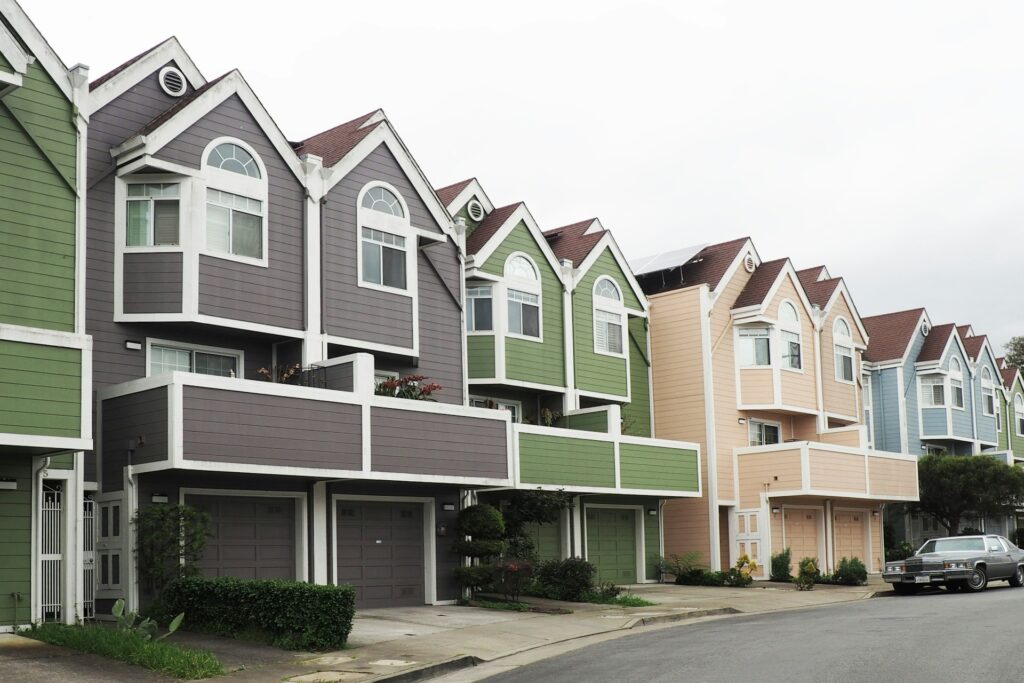
We are reader-supported. When you buy through links on our site, we may earn an affiliate commission.
Making the choice to buy a lot in a subdivision isn’t always an easy one. Which subdivision should you choose? How do you know what lots are the best choice for your family? How can you make sure you’re paying a fair price?
According to Realtor.com’s monthly housing market trends report for August, national inventory of homes for sale declined 36.4% over the previous year, pushing prices higher and limiting where people can buy.
Many new buyers turn to the idea of building their own home with the lack of viable choices on the market and homes getting snatched up quicker than they can make an offer on them. No one wants to get into a bidding war and pay more than a house is worth. Making the choice to build your own home avoids some of the pitfalls of buying a pre-existing structure.
If you’ve decided building in a subdivision is the right choice for you, you’ll want to keep some of the following tips in mind as you choose a lot.
1. Know the Neighborhood
Before buying a lot in a subdivision, get to know the neighborhood. What are the nearby schools and will you one day have children who might attend? Is the elementary and high school an easy drive or walk away? What other amenities are in the subdivision? Some have pools, rec areas and walking paths.
2. Ask About HOA Fees and Rules
Most subdivisions come with a Home Owners Association (HOA) and you’ll pay fees to keep common areas up and gain access to things such as tennis courts and swimming pools. There are some rules of thumbs you should keep in mind when understanding if you want to be under an HOA.
Ask about fees, regulations and who is in charge of the HOA for the neighborhood. Make sure you can live with any rules they put in place now or in the future.
3. Map Out the Phases
Every subdivision creates development in phases. That quiet lot on the end of the road may not remain that way when they open a new phase of the development. If you truly want to be on a dead-end, you’ll need to buy on a cul de sac. Ask to see the maps of the different phases both open now and potentially in the future.
Seeing where the different lots might be also may tell you if you want to buy now or wait and buy in the future when the next section opens.
4. Look up Values
Take the time to look up the assessed value of the property already in the neighborhood. Most local governments place this information online. You can see what other lots sold for and the size and cost of the homes surrounding them.
There is an old rule of thumb that you should buy in the most expensive neighborhood and build the cheapest house. At a minimum, you want your home compatible with those around you, so make sure you’re buying in a neighborhood well-suited to your home plans.
5. Ask About Easements
Many properties have access easements on the side or at the back. Be sure to ask where the easements are in your neighborhood. What if you want to place a mini barn at the back of your property? Are you limited to where you can place it? How far back does a fence need placed and are there requirements about the type of fence you can install?
It’s easy to forget small details before you build, but once you’ve lived in a home for a while, these minor things can become major loopholes you can’t get around to live the life you want.
6. Find Out About Builders
Some subdivisions work exclusively with a handful of builders. Find out if you’re allowed to choose any builder you’d like or you must use one of theirs. In neighborhoods where you’re limited to an exclusive list, you may wind up paying more than you’d like for the same home. The ability to choose whomever you’d like to build your house is often a deal breaker for new home buyers.
Don’t Make a Rash Decision
Buying a lot in a subdivision typically runs tens of thousands of dollars. Don’t rush into buying a lot in a subdivision until you’re absolutely certain you want to live there and are okay with all the requirements and fees. Take your time so you don’t make a mistake and wind up with land you can’t resell easily.










